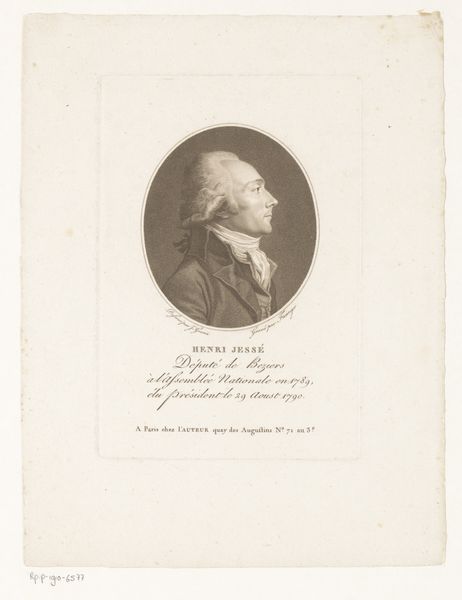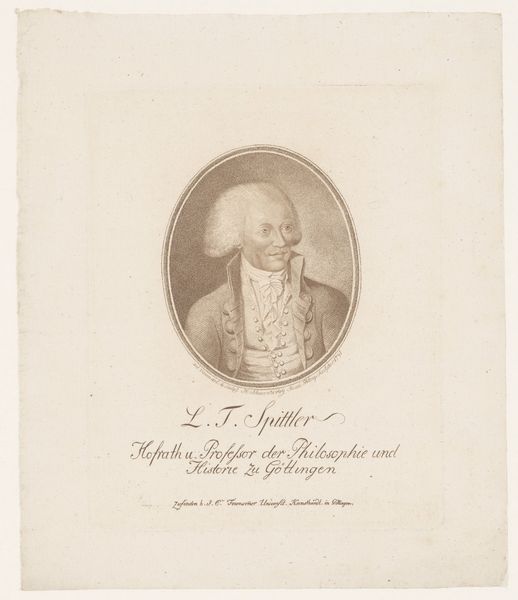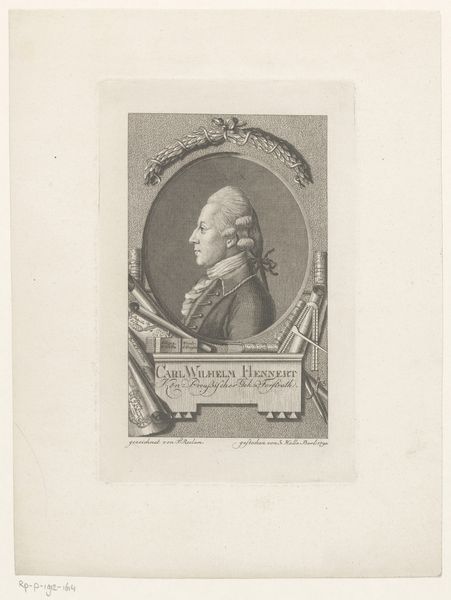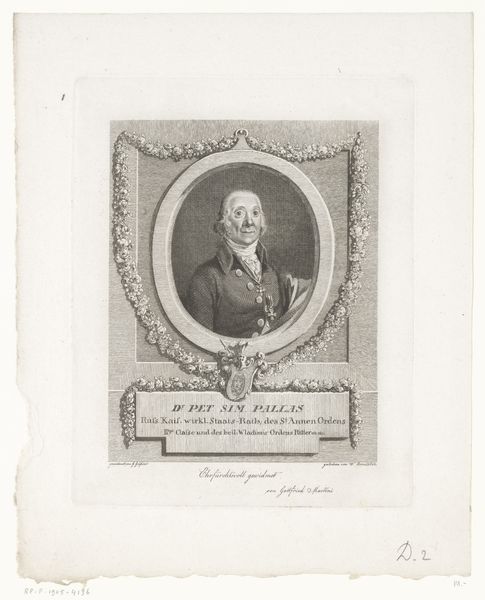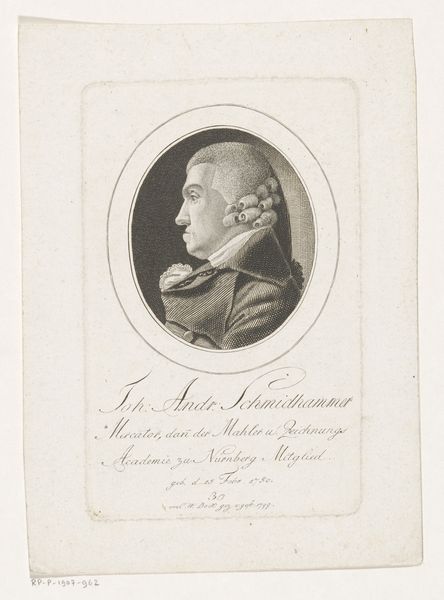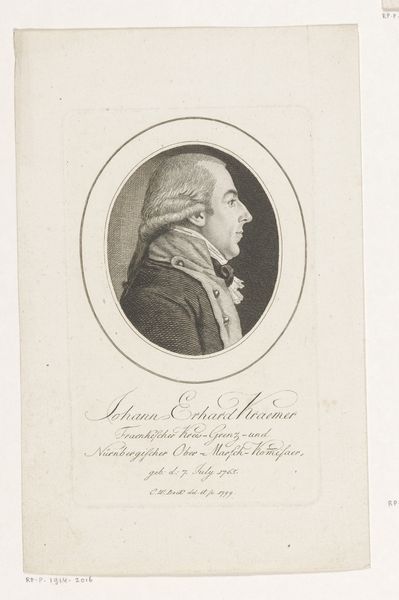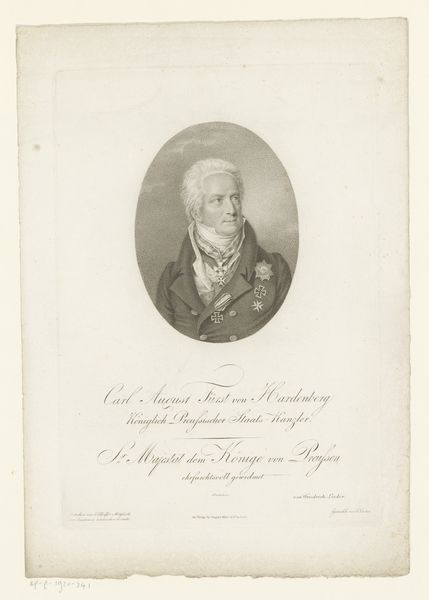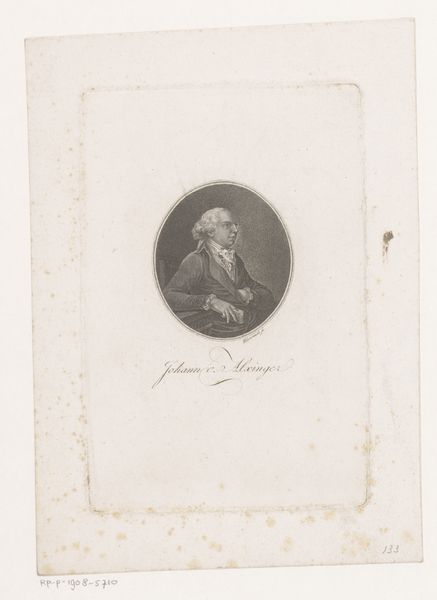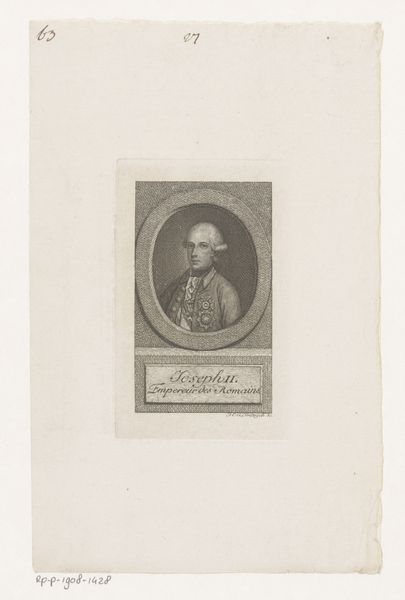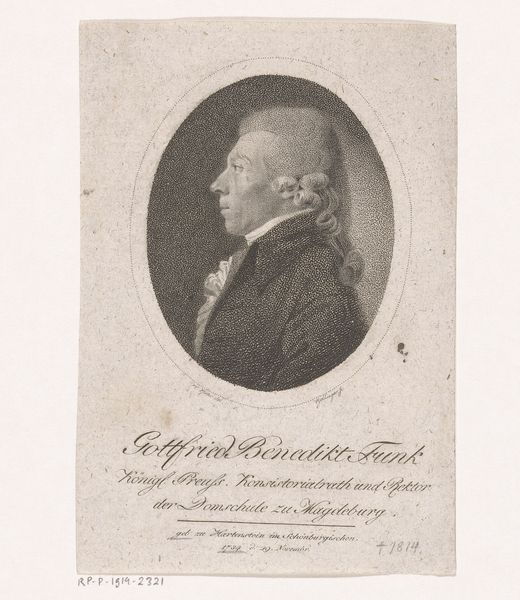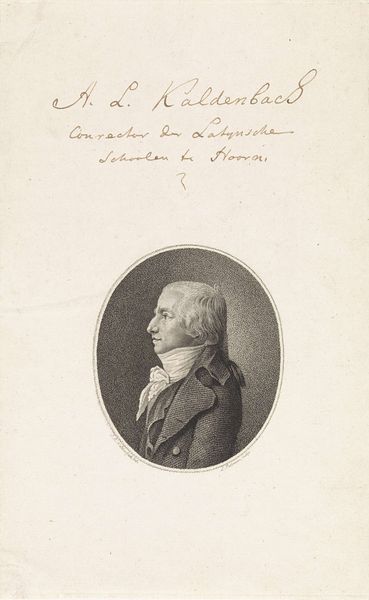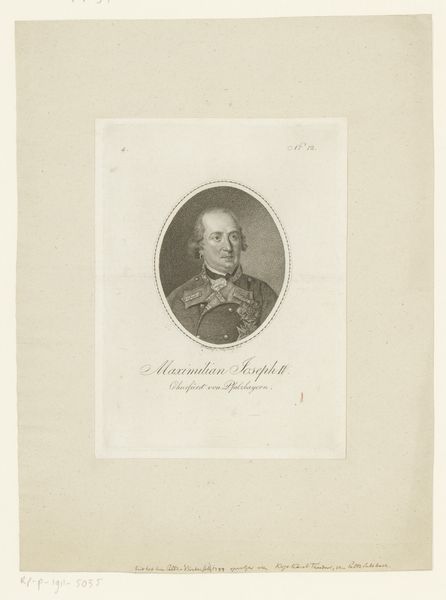
drawing, engraving
#
portrait
#
pencil drawn
#
drawing
#
neoclacissism
#
pencil sketch
#
old engraving style
#
engraving
Dimensions: height 180 mm, width 115 mm
Copyright: Rijks Museum: Open Domain
Curator: Here we have Friedrich Wilhelm Bollinger's "Portret van Girolamo Lucchesini" from 1795, currently housed in the Rijksmuseum. It is executed using engraving. Editor: The first thing that strikes me is its restrained elegance. It’s monochromatic, seemingly simple, but possesses an almost austere refinement in its execution. Curator: Austere is a great word! Consider the context: Neoclassicism prized order and rationality after the excesses of the Rococo. The profile portrait, popular in ancient Rome, was revived to convey virtue and statesmanship. Notice Lucchesini's controlled expression. Editor: I see what you mean, a calculated move. But looking closer, the intricacy is all in the lines – they’re densely packed, almost obsessive in rendering the textures of the wig and fabric, achieved by careful etching and the inking process itself. What meanings emerge through Bollinger’s choices, given his craft? Curator: Well, Lucchesini was a Prussian diplomat and writer, close to King Frederick the Great. The portrait memorializes not just his face, but his status. Look at the starburst insignia he wears – that signifies membership in a prestigious order. This symbol becomes a kind of visual shorthand. Editor: Absolutely, the materials declare themselves as much as the man depicted. It isn’t about conveying "realness" as such, but crafting a representation entirely befitting his station, reproduced in multiples to bolster image through the mechanics of printing. Each line signifies meticulous effort – time and resources invested to broadcast that standing. Curator: And even the circular frame is deliberate, evokes classical coins or medallions, further reinforcing Lucchesini's importance within the societal structures. It’s as if the portrait is saying, "Remember this man, remember his position." Editor: And how the clean line of the print itself mirrors this desire for posterity. Thinking about the tools, the labor, the distribution, this print becomes evidence – solid proof of one’s existence, even prestige, circulated and multiplied through its making. Curator: Looking again, it's like every element coalesces into one powerful symbolic assertion. Editor: Indeed, this piece offers so much to unpack – it becomes clear just how profoundly technique is tied to meaning.
Comments
No comments
Be the first to comment and join the conversation on the ultimate creative platform.
